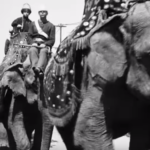The Israel Film Archive, Online
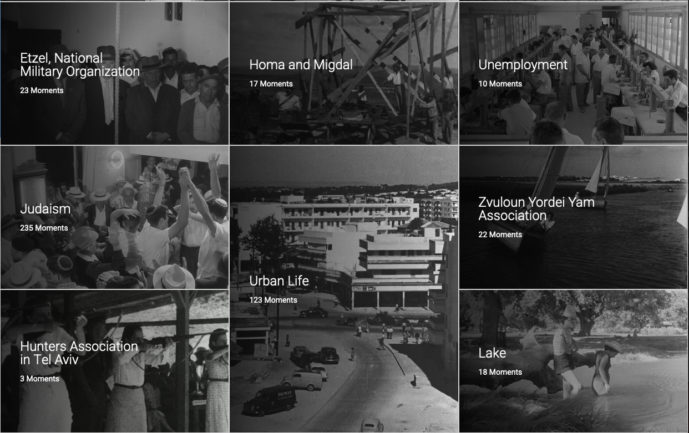
What did the State of Israel look like at its founding in 1948? What ads ran on TV in 1970? What did vacationing on the seaside look like in 1968?
Since the Israel Film Archive launched its new website in September 2020, it has attracted well over 500,000 visits from people interested in finding out — “beyond our greatest expectations,” says archivist Hila Abraham.
Visitors have also been able to stream feature films, there, and many other audiovisual recordings.
The Archive, which began its work in the early 1960s, is the official institute responsible for the collection and preservation of Israeli films, and is the largest film archive in the Middle East.
Its goals include to collect every full-length feature film produced in Israel and from before the establishment of the State of Israel in 1948, and to make as many of them available to the public as possible.
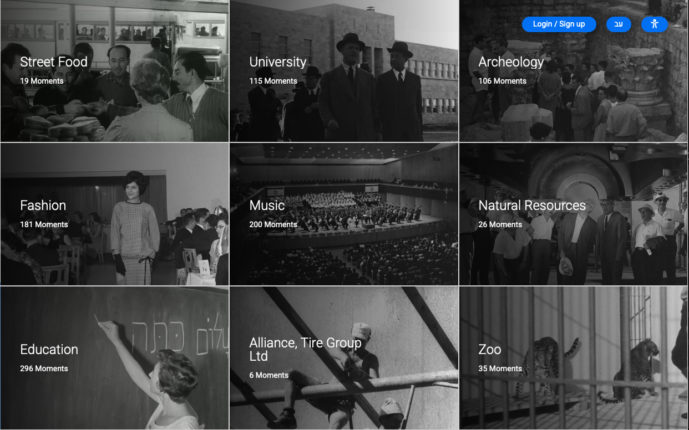
Two main features on the Archive’s website are primarily responsible for attracting the more than half a million visits within just six months of launch, Abraham says. The Archive’s video on demand platform offers more than 320 Israeli titles from all genres, some dating back to 1913 but some made as recently as 2020. Many of the films are freely available, while others can be streamed for a small fee. Most are exclusive to the Archive’s platform and in many cases have not been available anywhere for many years. The films online will all be subtitled in English by the end of 2021.
The website’s second main feature is an interactive map that streams more than 7,000 historical film clips — mainly newsreels and home movies — spanning from 1896 to 1972 and tagged according to geographical location, subject, decade, and persons depicted. Those can be viewed free of charge.
They offer fascinating glimpses of life in Israel over the years, organized into such categories as natural resources, education, music, archeology, fashion… Want to see snippets from a fashion show from 1962 and its laundry detergent, lemonade, and other advertisers? Or, an outstanding waiter competition from 1958? Or Israeli protests against Soviet show trials in 1970?
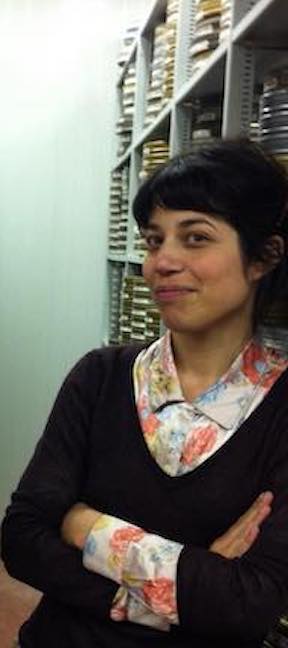
Hila Abraham
“We are indeed very proud of this project and feel it’s a unique access platform in the world of AV archives,” says Abraham, director of the Archive’s Digital Preservation and Access Project. She says the Archive’s plan, from the outset, was to make their prized, growing collection accessible to whoever wished to view it, and to do that by modern means.
The digital preservation and access work began about four years ago, mainly with 16mm and 35mm films. In addition, Abraham and her colleagues have posted documentary films, fiction films, student films, newsreels, commercials, and many other kinds of items to the site.
All the content of the two platforms was digitized in-house in the Archive’s 4K lab from original negatives and soundtracks.
The site is in Hebrew and English, and Archive personnel are progressively producing English subtitles for all moving-image content. That, says Abraham, “will allow a true international access to the materials.”
She and her colleagues are planning a major publicity push later in 2021, to spread word about the Archive’s offerings all around the world.
The Archive’s aims are ambitious. They include collecting every full-length feature film produced in Israel and pre-State of Israel, starting with the first Hebrew dramatic film, Oded the Wanderer (1932), an allegory of the Jewish wanderer.
Since 1994 Israel has had no processing laboratory for feature films; as a result, negatives and sound elements have been sent out of Israel for processing. Part of the Archive’s project is to bring back at least digital copies of those.
The Archive’s ultimate goal is to provide streaming access to original reels or digital copies of every film ever made in the country.
Progress so far, Abraham says, reflects six years of hard work and labor of love of “a crazy and dedicated team” to establish a professional institution capable of digitization, digital preservation, and access to Israeli film collections.
Abraham ventures to say that “it stands with other great access projects in the field of AV archives around the world.” She and her colleagues are adding more material: “You can expect to find more great treasures as days go by” including full feature films, ethnographic films, the General Organization of Workers in Israel film collection, and much more.
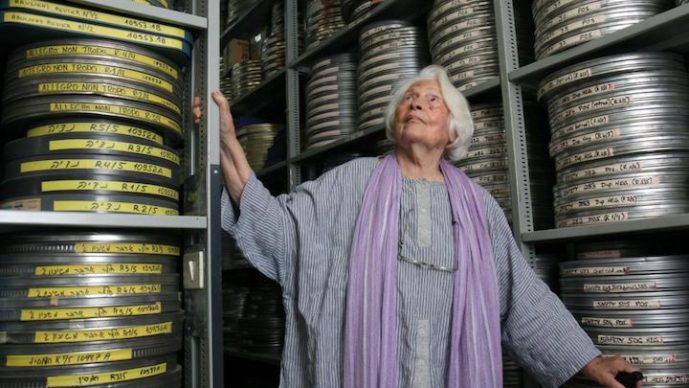
Lia van Leer, founder of the Israel Film Archive before her death in 2015.
That includes as many home movies as the Archive can collect, in a special emphasis designed to bring to light many aspects of Jewish life over the years, whether in Israel or anywhere in the Jewish diaspora.
Under the Archive’s model, it asks rightsholders to lend films without relinquishing copyright; the Archive can then digitize those and place them online so that members of the public may view them for a basic fee.
That approach is designed to provide an attractive quid pro quo to donors: the Archive’s digitization lab is the only fully professional one in the country, so rightsholders can benefit from providing their films.
From Abraham and her colleagues, the pitch is simple: they add historical annotation and searchability, and in that way, “the archive is the gateway to our history.”
The first film known to have been shot in what has since 1948 been the State of Israel is at the Archive: it was made in 1896 by a Lumière brothers cameraman and is a seven-minute film depicting Jerusalem, Jaffa, and Bethlehem.
Other prized items in the Archive include a handpainted film from the 1920s recovered from the former Yugoslav film archives; memorable events of the Zionist movement such as settlements being built at the time of the formation of the State of Israel; and many depictions of such everyday events as the effects of a tuberculosis outbreak in 1949, the record 1950 snowfall in Jerusalem, and a visit with Albert Einstein.
Among more recent Israeli films, the Archive holds, for example, Avi Nesher’s Rage and Glory (1984) about pre-state underground-movement fighters resisting British rule in the early 1940s, a film that the Film Society of the Lincoln Center acclaimed as one of Israel’s most important ever. Then there’s Rafi Bukai’s Avanti Popolo (1986), about two Egyptian soldiers stuck in Israeli during the Six Day War; Assi Dayan’s Life According to Agfa (1992), a portrait of a Tel Aviv bar’s patrons; and the collection of Alice Shalvi, a leading Israeli advocate for peace, women’s rights, and justice.

Israel Film Archive
A sign of how important the Archive’s project is considered is that several private foundations and governmental agencies have contributed to funding it. Those have included the Jaglom Family Foundation, the Beracha Foundation, the Kennedy Leigh Trust, the Mifal Hapayis national lottery, the Jerusalem Development Authority, the Heritage Department of the Jerusalem Affairs Ministry, the Culture Ministry, and the Tziyunei Derech Project.
Increasingly, Abraham says, the Archive is also receiving general public support, particularly in the form of donations of films and home movies.
“Much work is still to be done,” she says; however, “we’ve been able to make it, against all odds.”
— Peter Monaghan
Previous Post: A Lifetime of Movie Research, Digitized
Next Post: Hagley Library’s Collection Tells How Industry Worked




